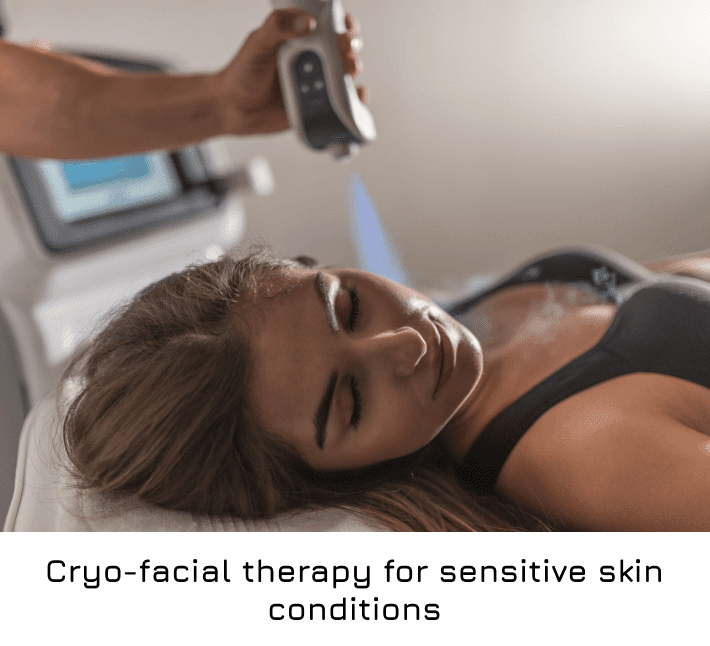Cryo-facial therapy

Sensitive skin conditions can be a source of frustration and discomfort for many individuals, impacting their daily lives and self-esteem. Traditional skincare approaches may not always provide the relief sought by those with sensitive skin, leading to a search for alternative and effective solutions. One such innovative treatment gaining popularity is cryofacial therapy, a cooling technique that harnesses the power of extreme cold to address a variety of skin concerns, particularly those related to sensitivity.
Understanding Cryofacial Therapy:
Cryo facial therapy involves the application of extremely cold temperatures to the face, typically using liquid nitrogen or a specialized cryo wand. The process is non-invasive and works by constricting blood vessels, reducing inflammation, and stimulating collagen production. This combination of effects can benefit individuals struggling with sensitive skin conditions, such as redness, irritation, and inflammation.
The Cryofacial Experience
During a cryofacial session, a trained professional directs the cold air or nitrogen onto the face, creating a sensation often described as invigorating and refreshing. The brief exposure to extreme cold triggers the body’s natural response to protect and repair the skin. This can lead to improved circulation, reduced pore size, and a more even skin tone.
Benefits for Sensitive Skin
Reduction of Inflammation: Cryofacial therapy’s ability to constrict blood vessels helps reduce inflammation, a common issue in sensitive skin conditions like rosacea and eczema.
Soothing Irritation: The cooling effect of cryotherapy provides immediate relief to irritated skin, alleviating discomfort associated with sensitivity.
Stimulation of Collagen Production: By stimulating collagen production, cryo-facial therapy promotes skin elasticity and strength, helping to fortify the skin barrier against external irritants.
Minimization of Redness: Individuals with sensitive skin often experience persistent redness. Cryo-facial therapy can help minimize redness by calming the blood vessels beneath the skin’s surface.
Conclusion:
Cryo-facial therapy offers a promising solution for individuals with sensitive skin conditions, providing a unique approach to addressing inflammation, irritation, and redness. While further research is needed to fully understand the long-term effects and potential risks, early indications suggest that cryofacial therapy can be a valuable addition to skincare routines for those seeking relief from sensitive skin woes.
Before considering cryofacial therapy or any new skincare treatment, it is crucial to consult with a qualified skincare professional or dermatologist to ensure that the chosen method is suitable for individual skin needs. As with any skincare regimen, a holistic approach, including proper cleansing, moisturizing, and sun protection, should be maintained alongside any specialized treatments. With the right care, cryo-facial therapy may offer a cool and refreshing solution for sensitive skin conditions, contributing to improved skin health and overall well-being.
